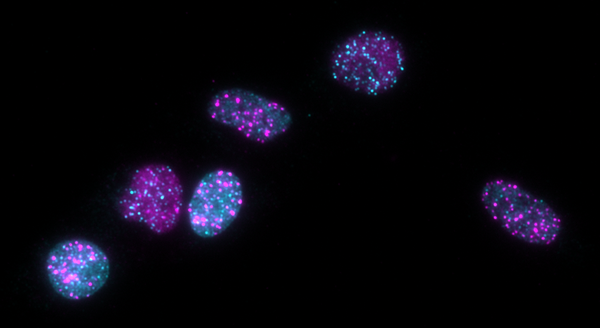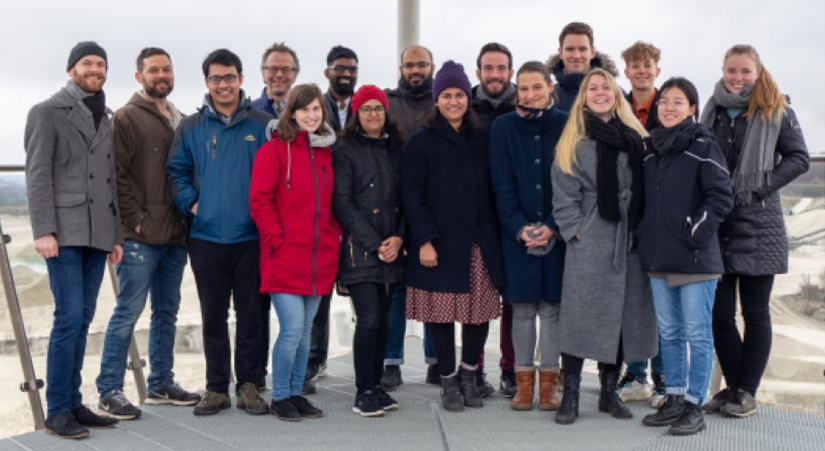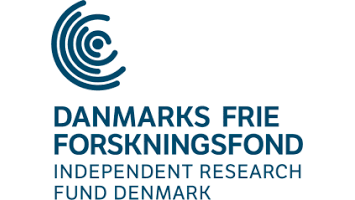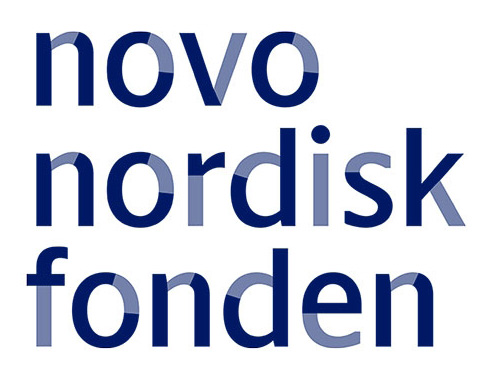Sørensen group
The objectives of our lab are to study how cells maintain genome stability to avert cancer and genetic disorders, accurately assess the functional consequences of mutations, and investigate potential therapeutic avenues created by specific mutations.

Our vision is to uncover the origins of mutations, determine their functional impacts, and explore therapeutic opportunities arising from specific mutations. Through interdisciplinary research and clinical collaborations, we aim to advance precision treatments and improve patient outcomes. Despite identifying millions of mutations and variants, we still lack a comprehensive understanding of their biological and clinical significance. By working closely with clinicians, we decode the effects of genetic alterations, focusing on hereditary breast and ovarian cancer and rare genetic conditions like Seckel Syndrome. Our research, using cutting-edge techniques and technologies, promises to advance diagnostic, surveillance, and therapeutic possibilities for patients.
Cancer cells use self-inflicted DNA breaks to evade growth limits imposed by genotoxic stress
- Genotoxic therapy such as radiation serves as a frontline cancer treatment, yet acquired resistance that leads to tumor reoccurrence is frequent.
- We found that cancer cells maintain viability during irradiation by reversibly increasing genome-wide DNA breaks, thereby limiting premature mitotic progression. We identify caspase-activated DNase (CAD) as the nuclease inflicting these de novo DNA lesions at defined loci.
- Loss of CAD activity impairs cell fate decisions, rendering cancer cells vulnerable to radiation-induced DNA double-strand breaks. Our observations highlight a cancer-selective survival adaptation, whereby tumor cells deploy regulated DNA breaks to delimit the detrimental effects of therapy-evoked DNA damage.
Read paper: Cancer cells use self-inflicted DNA breaks to evade growth limits imposed by genotoxic stress.
Accurate functional analysis of genetic sequence variants using CRISPR-Select
- Determining the functional role of thousands of genetic sequence variants (mutations) associated with genetic diseases is a major challenge.
- Here, we co-developed a solution with the Frödin team at BRIC termed CRISPR-Select. This is a set of flexible knock-in assays that introduce a genetic variant in a cell population and track its absolute frequencies relative to an internal, neutral control mutation. CRISPR-Select can thereby determine how a single genetic change impacts pathogenicity, drug responsiveness/resistance or in vivo tumor promotion.
- The method is accurate, quantitative, fast and simple and works in single-well or 96-well higher throughput format. Thus, CRISPR-Select provides a versatile functional variant assay for research, diagnostics and drug development for genetic disorders.
Read paper: Multiparametric and accurate functional analysis of genetic sequence variants using CRISPR-Select
Highly efficient killing of aggressive ovarian cancers by combining WEE1 and PKMYT1 inhibition
- A strong genetic interaction between WEE1 and PKMYT1 led us to hypothesize that a multiple low-dose approach utilizing joint WEE1 and PKMYT1 inhibition eradicates cancer cells.
- We found that the combined inhibition exhibited synergistic effects in eradicating ovarian cancer cells and organoid models at a low dose. Mechanistically, the combined treatment deregulated CDK activity, exacerbated DNA replication stress, replication catastrophe, and inflammatory STAT1 signalling activation.
- Our research suggests a new multiple low-dose approach to WEE1 and PKMYT1 inhibition that may contribute to the development of new treatments for ovarian cancer.
WEE1 kinase guards genome stability by suppressing a cellular nuclease that promotes DNA degradation when replication is challenged
- Cellular feedback systems ensure genome maintenance during DNA replication. When replication forks stall, newly replicated DNA must be protected by pathways that limit DNA nuclease attacks.
- We discovered that WEE1 kinase has a major role in guarding against DNA degradation at stalled replication forks. WEE1 limits a CDK2-DNA2 pathway that if left dysregulated attacks DNA at replication forks. Thus, clinically relevant WEE1 inhibition triggers nascent DNA degradation.
- WEE1 inhibitors are under development as anti-cancer treatment. Our new discoveries may improve WEE1-dependent therapeutic strategies to specifically eradicate cancer cells that frequently harbor elevated DNA replication stress.
Read paper: WEE1 kinase protects the stability of stalled DNA replication forks by limiting CDK2 activity
Unraveling causes of hereditary breast and ovarian cancer
- We identify genes underlying the hereditary cancers and unravel their functions. Based on this, we decode the impacts of genetic variants (mutations) to understand if they are pathogenic and drive drug responsiveness.
Develop quantitative approaches to decode mutation impacts
- We develop genome editing approaches to determine impacts of germline syndrome variants and cancer mutations.
New targetable genome maintenance pathways
- We explore the key pathways guarding genome maintenance and cell cycle control in S and G2 phase. This is based on cancer genomic exploration coupled with genetic screens.
- WEE1 and PKMYT1 kinases are two major cell cycle and genome maintenance regulators that are high-profile targets in oncology. We investigate pathways and proteins that determine the response to combined WEE1 and PKMYT1 inhibition. We also address if these new factors are potential biomarkers or new drug targets relevant in combination with WEE1 and PKMYT1 inhibition.
- We study DNA damage checkpoint control with focus on the highly cancer relevant checkpoint in G2 phase. We also investigate override of the G2 checkpoint as means to sensitize cancer cells to therapy.
We focus on developing new methods to unravel genotype-phenotype connections using the CRISPR-Cas9 genome editing technology. We do this both at the gene level and – most importantly – at variant level. Thus, we engineer cell lines, including stem cells, to exactly re-create patient mutations for precise modeling of cancer. This is a major challenge for the scientific and clinical communities, and our approaches may have marked impacts in the future. We recently co-developed CRISPR-Select that incorporates unique internal controls to provide unprecedented quantitative estimate of mutation impact.
Most projects initiate with unbiased large-scale analysis to identify new unexpected factors in genome maintenance. We develop high throughput functional genetic screens based on CRISPR -libraries. To this end, we use the automated systems in the BRIC High Throughput Cell-based Screens/High Content CRISPR Screening core facility. In addition, we frequently employ proteomic and phospho-proteomic analysis to characterize interactomes and pathways of newly identified factors.
Selected publications
Kwon Y#, Rösner H#, Zhao W, Selemenakis P, //, *Wiese C, *Sørensen CS, *Sung P. (2023) DNA binding and RAD51 engagement by the BRCA2 C-terminus orchestrate DNA repair and replication fork preservation. Nature Communications. 14(1):432.
Benada J, Bulanova D, Azzoni V, Petrosius V, Ghazanfar S, Wennerberg K, *Sørensen CS. (2023) Synthetic lethal interaction between WEE1 and PKMYT1 is a target for multiple low-dose treatment of high-grade serous ovarian carcinoma. Nucleic Acids Research Cancer. 5(3):zcad029.
Benada J, Alsowaida D, *Megeney LA, *Sørensen CS. (2023) Self-inflicted DNA breaks in cell differentiation and cancer. Trends in Cell Biology. 33(10):850-859.
Petrosius V, Benada J, Nielsen O, Schoof EM, *Sørensen CS. (2022) Temporal phosphoproteomics reveals WEE1-dependent control of 53BP1 pathway. iScience. 26(1):105806.
Niu Y#, Azevedo CAF#, Li X#, Kamali EG#, *Sørensen CS, *Frödin M. (2022) CRISPR-Select: Fast, accurate and multiparametric functional analysis of genetic sequence variants. Nature Genetics. 54(12):1983-1993.
Larsen BD, Benada J, Yung PYK, Bell RAV, Pappas G, Urban V, Ahlskog JK, Kuo TT, Janscak P, Megeney LA, Elsässer SJ, Bartek J, *Sørensen CS. (2022) Cancer cells use self-inflicted DNA breaks to evade growth limits imposed by genotoxic stress. Science. 376(6592):476-483.
Elbæk CR, Petrosius V, Benada J, Erichsen L, Damgaard RB, *Sørensen CS. (2022) WEE1 kinase protects the stability of stalled DNA replication forks by limiting CDK2 activity. Cell Reports. 38(3):110261.
Zarrizi R#, Higgs MR#, Vossgröne K#, Rossing M, Bertelsen B, Bose M, Kousholt AN, Rösner H, Network TC, Ejlertsen B, Stewart GS, *Nielsen FC, *Sørensen CS. (2020) Germline RBBP8 variants associated with early-onset breast cancer compromise replication fork stability. Journal of Clinical Investigation. 130(8):4069-4080.
In the media
To escape radiation, tumor cells reversibly damage their DNA
29.04.2022 by BioWorld.
Tumor cells activate DNA breaks, protecting them from death due to treatment-induced damage
29.04.2022 by Medical Xpress.
Cancer Cells Break Own DNA to Defend Against Radiation
28.04.2022 by TheScientist.
Research discovery reveals how a cancer cell resists radiation treatment
28.04.2022 by UCPH.
Danske forskere finder nyt brystkræft-gen hos unge (in Danish)
13.05.2020 by Rigshospitalet.








